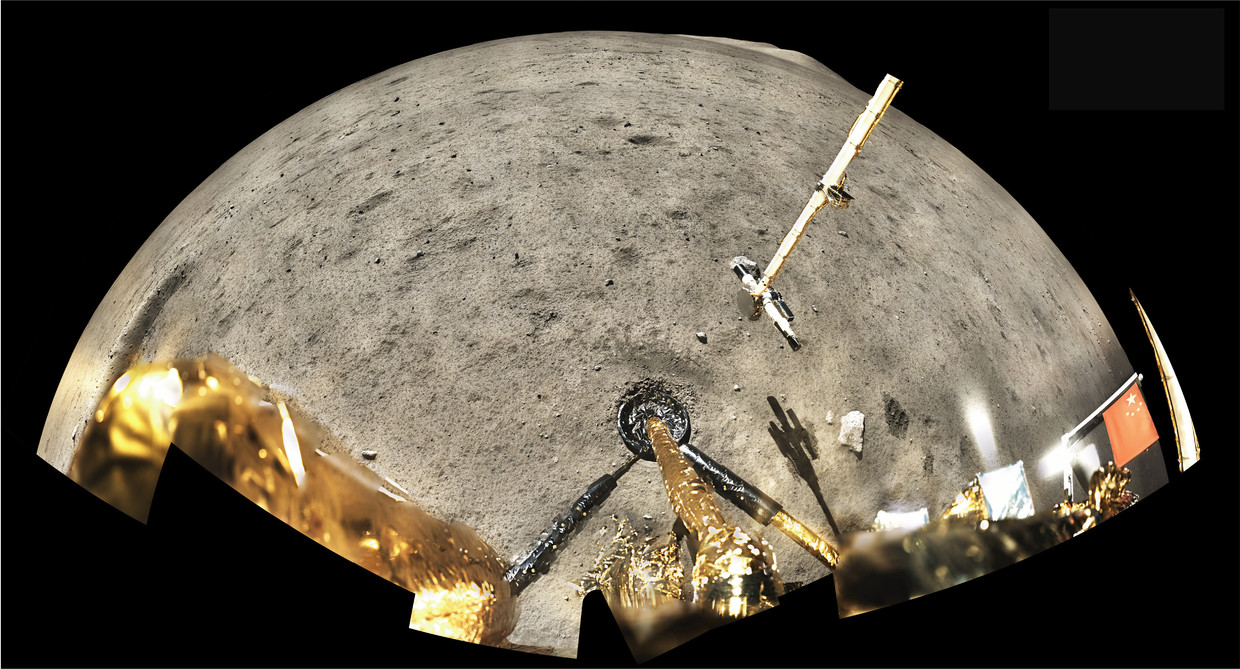
Moon rocks transported to Earth disrupt the solar system’s timeline

With the new analysis on Thursday Featured in the magazine ScienceThe Chinese lunar program is following in the footsteps of the American Apollo missions. In the 1960s and 1970s, astronauts picked up stones from among the gray grains of the moon’s surface, and this time a robotic car prepared the valuable materials for transport to an Earth laboratory.
“You can safely say I was really looking forward to this analysis,” says lunar expert Wim van Westrenen, affiliated with the Free University of Amsterdam. The big question was: How old is the soil there? It could have been 1 to 3 billion years old beforehand, which is a big geological difference.
Chang’e-5 landed in the crater of Oceanus Procellarum, an area made up of solid lava from a volcanic eruption. After analyzing two parts of this so-called basalt layer, the researchers were able to conclude that the material emanated from the moon’s interior about two billion years ago.

Solar system timeline
First of all, this provides new insight into the timeline of the solar system. Planets, moons and other celestial bodies encounter falling space debris. To estimate the age of the surface of celestial bodies like the Moon or our neighboring planet Mars, scientists look at the density of impact craters. The idea is: the more pits there are, the older the surface. If you see relatively little, something like a volcanic eruption must have filled the craters.
However, to also attach times to this schedule, criteria are needed. Points You Know: At this crater density, the visible bottom is quite old. So far, these points have been provided by moon rocks on the Apollo missions. But: All these moon rocks are between three and four billion years old. A newer checkpoint on the timeline is missing yet.
The soil in Oceanus Procellarum now supplies this point. However, the age differs from what most models predicted. So we must now also review age estimates elsewhere in the solar system.

Making lava
The open question is how lava could have flowed onto the Moon two billion years ago. Lava needs heat, and the moon quickly cooled after its formation. Originally, scientists believed that radioactive elements located deep in the mantle provide the necessary heat. “We’ve seen these elements in the stones of the Apollo missions, but they seem to be absent here,” van Westrenen says.
At the same time, the analysis also immediately provides a possible explanation. For example, the material appears to contain more iron than the Apollo stones. And we know that iron-rich rocks dissolve more easily.
The discovery shows that the Moon is not a unified place. “The Chinese mission has only come down a bit to the northwest compared to the Apollo missions and you can immediately see significant differences.”
Van Westrenen is now eagerly looking forward to analyzing the ratio of different oxygen variables, so-called isotopes, in the rock. You can compare that to the relationship on the ground. In this way we can reconstruct the history of the moon. According to the most popular theories, the Moon and Earth are two parts of one primordial planet. “For now, the main question you can ask about the moon remains: How did it get there in the first place?”


“Travel enthusiast. Alcohol lover. Friendly entrepreneur. Coffeeaholic. Award-winning writer.”
